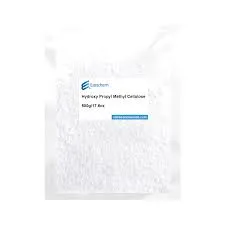
Sep . 22, 2024 05:19 Back to list
hydroxypropyl methylcellulose
Understanding Hydroxypropyl Methylcellulose A Versatile Polymer
Hydroxypropyl methylcellulose (HPMC) is a semi-synthetic polymer derived from cellulose, a natural polymer found in plant cell walls
. HPMC has gained widespread recognition in various industries, including pharmaceuticals, food, cosmetics, and construction, due to its unique properties and multifunctional applications.One of the most important characteristics of HPMC is its ability to form gels and films. By modifying the cellulose structure through the substitution of hydroxypropyl and methyl groups, HPMC exhibits enhanced solubility and viscosity in water. This feature makes it an effective thickening agent, stabilizer, and emulsifier. In the pharmaceutical industry, HPMC is often employed in tablet formulations and drug delivery systems. Its gel-forming properties allow for controlled release of active ingredients, ensuring that medications are released at a steady rate, enhancing their effectiveness.
HPMC also plays a crucial role in the food industry. It is commonly used as a food additive due to its thickening and gelling abilities. In food products, HPMC can improve texture, provide moisture retention, and enhance mouthfeel. Moreover, it is often used in gluten-free formulations, where it helps mimic the texture that gluten provides in conventional baked goods. The use of HPMC can result in softer, more appealing products for individuals with gluten sensitivities or celiac disease.
hydroxypropyl methylcellulose

In the realm of personal care products, HPMC is valued for its film-forming and stabilizing properties. It is utilized in lotions, creams, and other cosmetic formulations. The polymer helps to provide a smooth application, improve the viscosity of products, and stabilize emulsions. Additionally, HPMC is regarded as a safe ingredient, making it suitable for use in products intended for sensitive skin.
The construction industry also benefits from the versatility of HPMC. It is commonly found in dry-mix mortars and adhesives, where it acts as a water-retaining agent and improves workability. HPMC contributes to the performance of construction materials by enhancing adhesion and prolonging the open time of mortars, allowing for more flexibility during application. Its water-retaining properties help to prevent premature drying, ensuring that the materials cure properly and achieve their intended strength.
Environmental considerations have led to increased interest in HPMC as a biodegradable alternative to synthetic polymers. As regulations become stricter regarding environmental impacts, the demand for sustainable materials continues to grow. HPMC’s natural origins and biodegradability make it an appealing choice for industries looking to reduce their ecological footprint.
In conclusion, hydroxypropyl methylcellulose is a remarkable polymer with diverse applications across various fields. Its unique properties make it an essential component in pharmaceuticals, food products, personal care items, and construction materials. As industries evolve and adapt to meet consumer needs and environmental concerns, the significance of HPMC is likely to increase, paving the way for innovative uses and formulations. Its versatility and effectiveness make it an invaluable resource in the modern world, illustrating the potential of derived natural polymers in solving contemporary challenges.
-
Unlocking the Benefits of HPMC Products: A Gateway to Versatile Applications
NewsAug.07,2025
-
Unleashing the Potential of HPMC Ashland: A Comprehensive Look
NewsAug.07,2025
-
Tile Bonding Cellulose: The Key to Superior Adhesion and Durability
NewsAug.07,2025
-
Hydroxypropyl Methylcellulose Powder: The Versatile Component in Modern Pharmaceuticals
NewsAug.07,2025
-
Hydroxyethyl Cellulose: The Versatile Solution for Various Industries
NewsAug.07,2025
-
Hydroxyethyl Cellulose (HEC): The Versatile Polymer for Various Applications
NewsAug.07,2025







